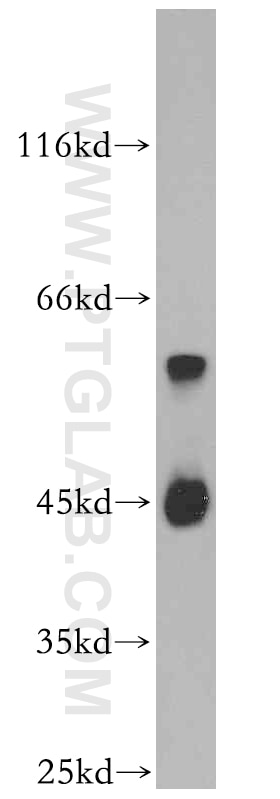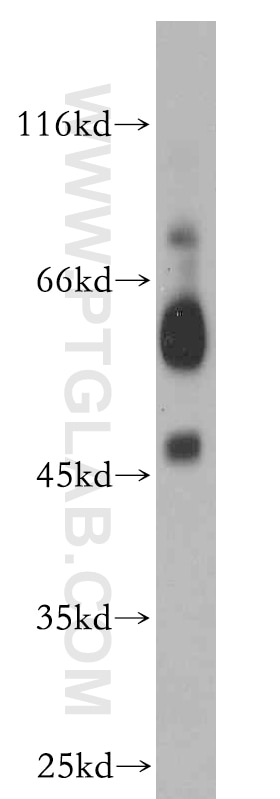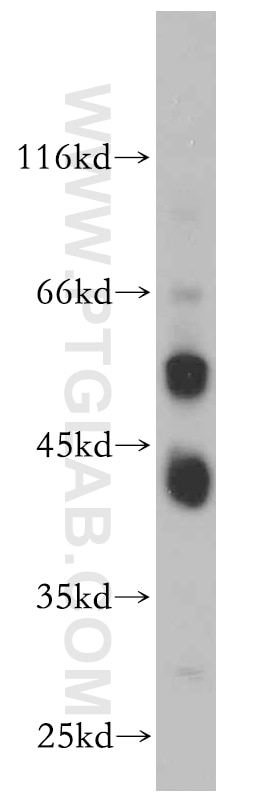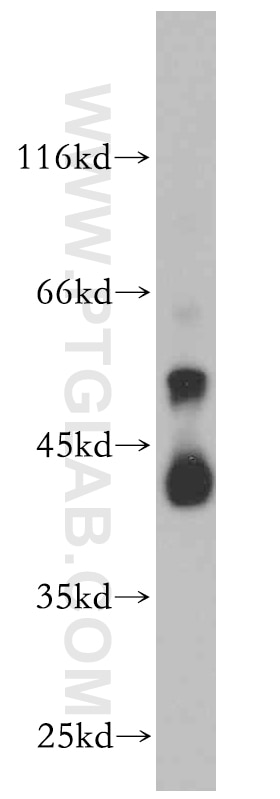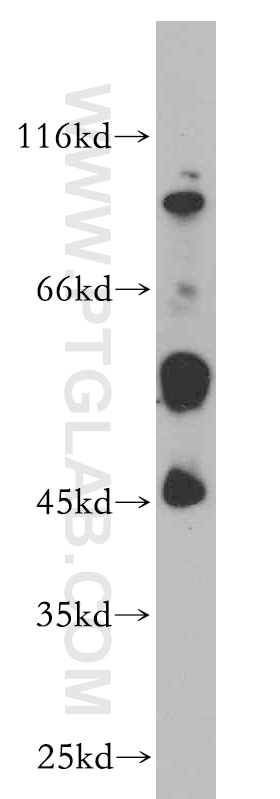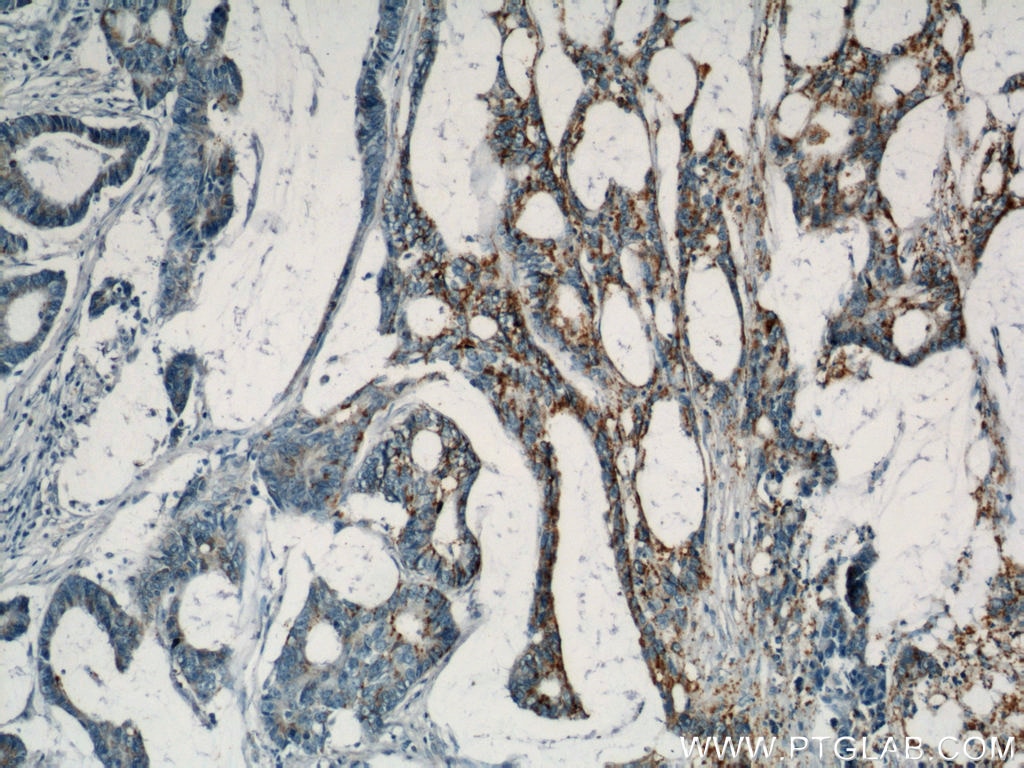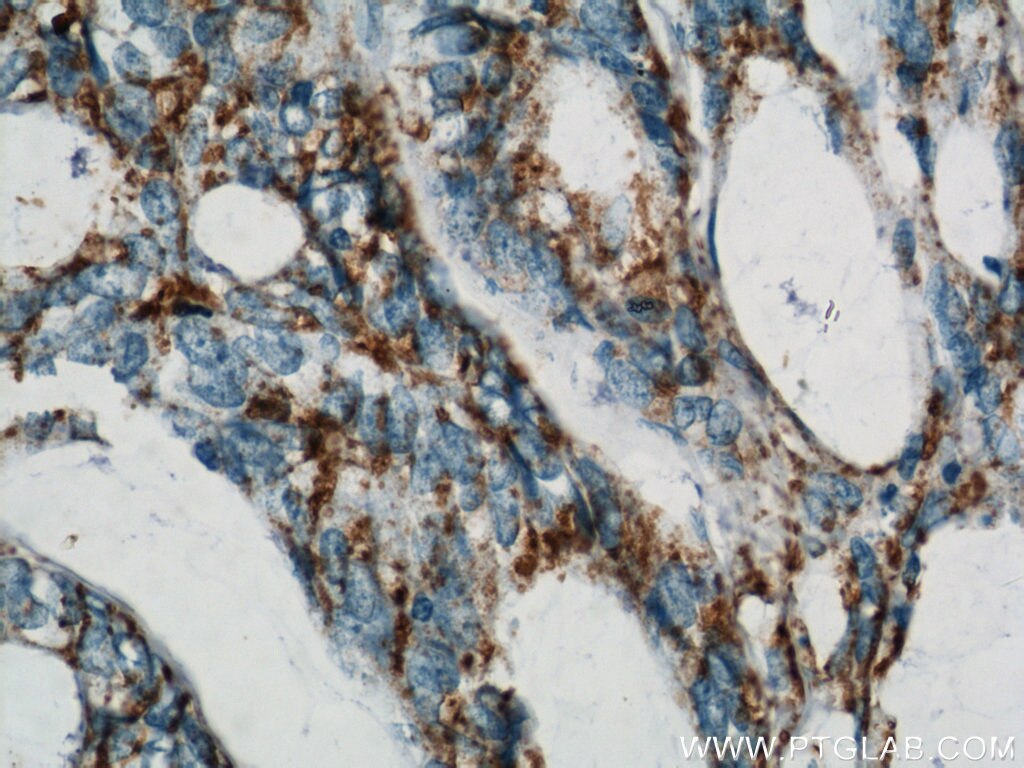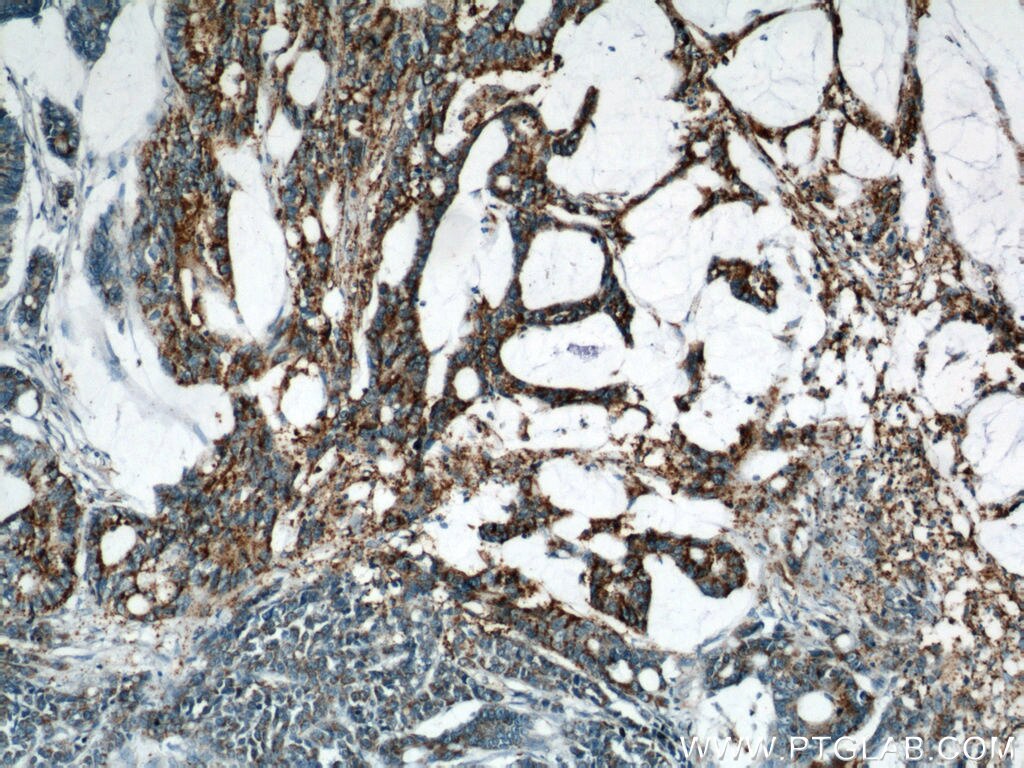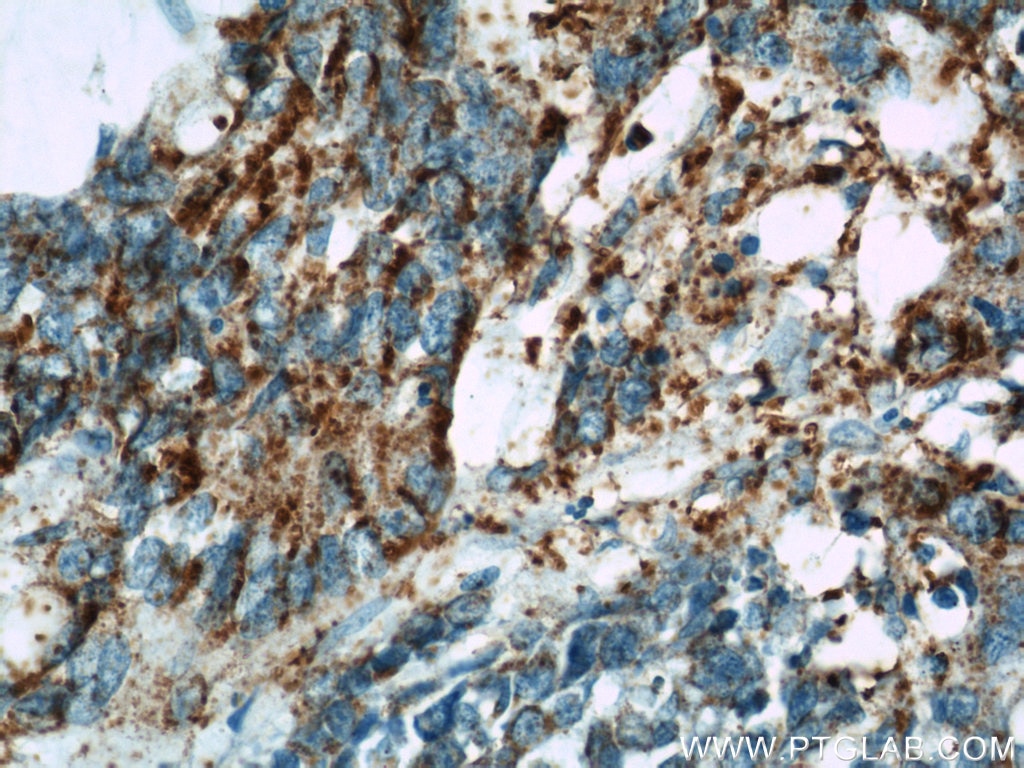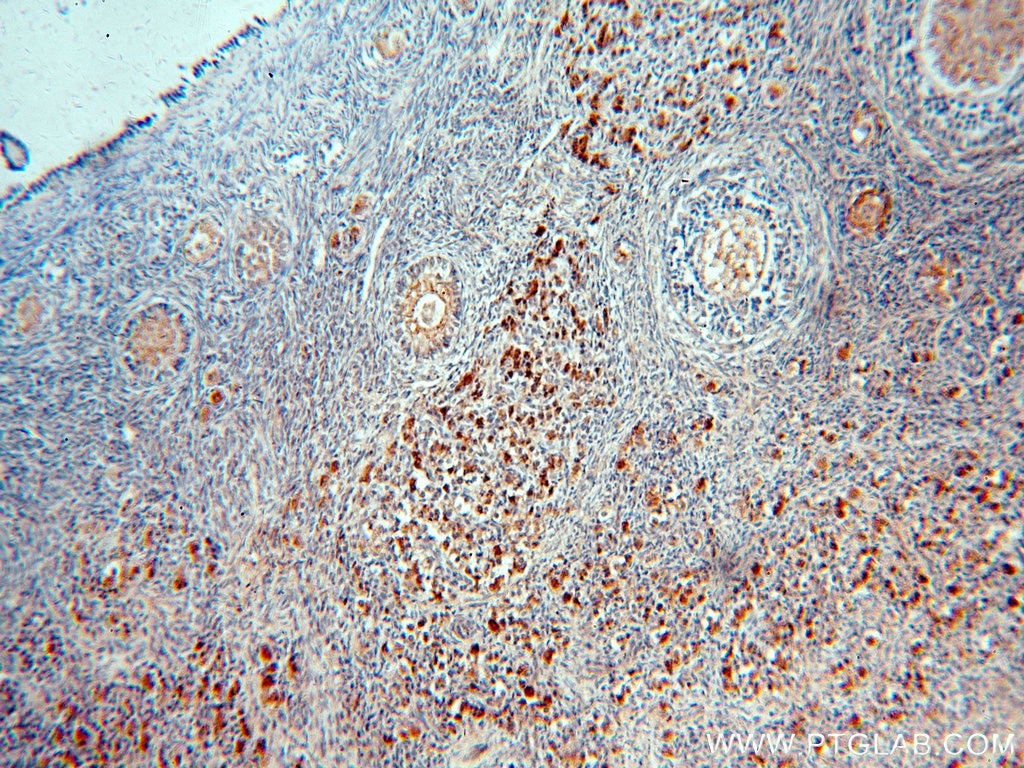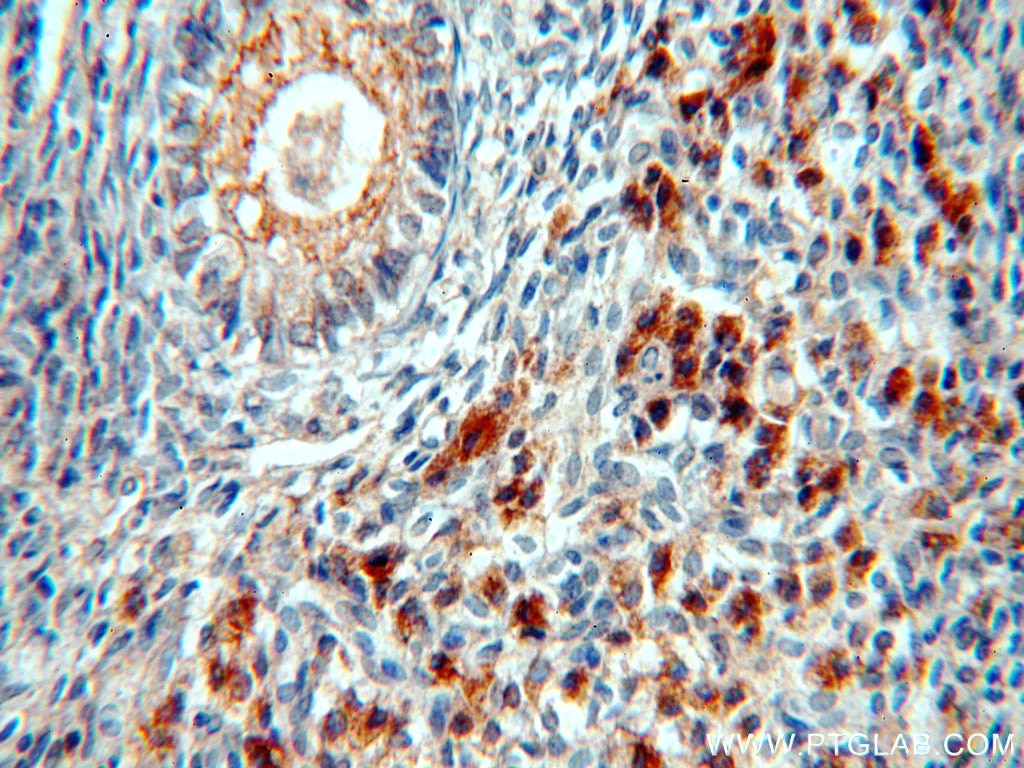Validation Data Gallery
Tested Applications
| Positive WB detected in | PC-3 cells, mouse brain tissue, mouse large intestine tissue, mouse ovary tissue, mouse skeletal muscle tissue |
| Positive IHC detected in | human colon cancer tissue, human ovary tissue Note: suggested antigen retrieval with TE buffer pH 9.0; (*) Alternatively, antigen retrieval may be performed with citrate buffer pH 6.0 |
Recommended dilution
| Application | Dilution |
|---|---|
| Western Blot (WB) | WB : 1:1000-1:4000 |
| Immunohistochemistry (IHC) | IHC : 1:20-1:200 |
| It is recommended that this reagent should be titrated in each testing system to obtain optimal results. | |
| Sample-dependent, Check data in validation data gallery. | |
Published Applications
| WB | See 1 publications below |
| IHC | See 1 publications below |
Product Information
20330-1-AP targets B4GALT2 in WB, IHC, ELISA applications and shows reactivity with human, mouse, rat samples.
| Tested Reactivity | human, mouse, rat |
| Cited Reactivity | human |
| Host / Isotype | Rabbit / IgG |
| Class | Polyclonal |
| Type | Antibody |
| Immunogen |
CatNo: Ag14046 Product name: Recombinant human B4GALT2 protein Source: e coli.-derived, PGEX-4T Tag: GST Domain: 60-176 aa of BC002431 Sequence: PGVLMGGRYTPPDCTPAQTVAVIIPFRHREHHLRYWLHYLHPILRRQRLRYGVYVINQHGEDTFNRAKLLNVGFLEALKEDAAYDCFIFSDVDLVPMDDRNLYRCGDQPRHFAIAMD 相同性解析による交差性が予測される生物種 |
| Full Name | UDP-Gal:betaGlcNAc beta 1,4- galactosyltransferase, polypeptide 2 |
| Calculated molecular weight | 372 aa, 42 kDa |
| Observed molecular weight | 42-45 kDa |
| GenBank accession number | BC002431 |
| Gene Symbol | B4GALT2 |
| Gene ID (NCBI) | 8704 |
| RRID | AB_10693615 |
| Conjugate | Unconjugated |
| Form | |
| Form | Liquid |
| Purification Method | Antigen affinity purification |
| UNIPROT ID | O60909 |
| Storage Buffer | PBS with 0.02% sodium azide and 50% glycerol{{ptg:BufferTemp}}7.3 |
| Storage Conditions | Store at -20°C. Stable for one year after shipment. Aliquoting is unnecessary for -20oC storage. |
Protocols
| Product Specific Protocols | |
|---|---|
| IHC protocol for B4GALT2 antibody 20330-1-AP | Download protocol |
| WB protocol for B4GALT2 antibody 20330-1-AP | Download protocol |
| Standard Protocols | |
|---|---|
| Click here to view our Standard Protocols |
Publications
| Species | Application | Title |
|---|---|---|
Front Genet Identification of a Novel Glycosyltransferase Prognostic Signature in Hepatocellular Carcinoma Based on LASSO Algorithm. | ||
J Immunother Cancer Novel post-translational modification learning signature reveals B4GALT2 as an immune exclusion regulator in lung adenocarcinoma |

